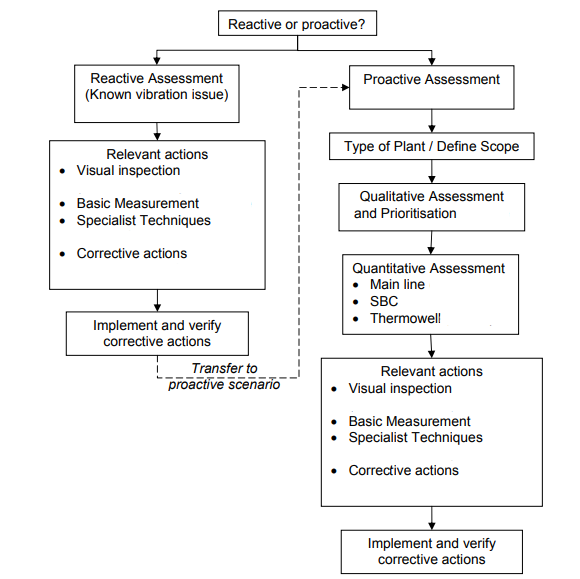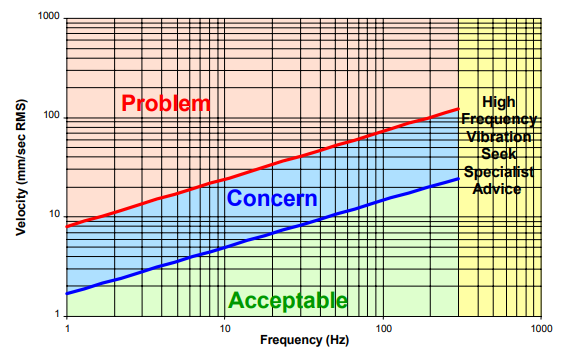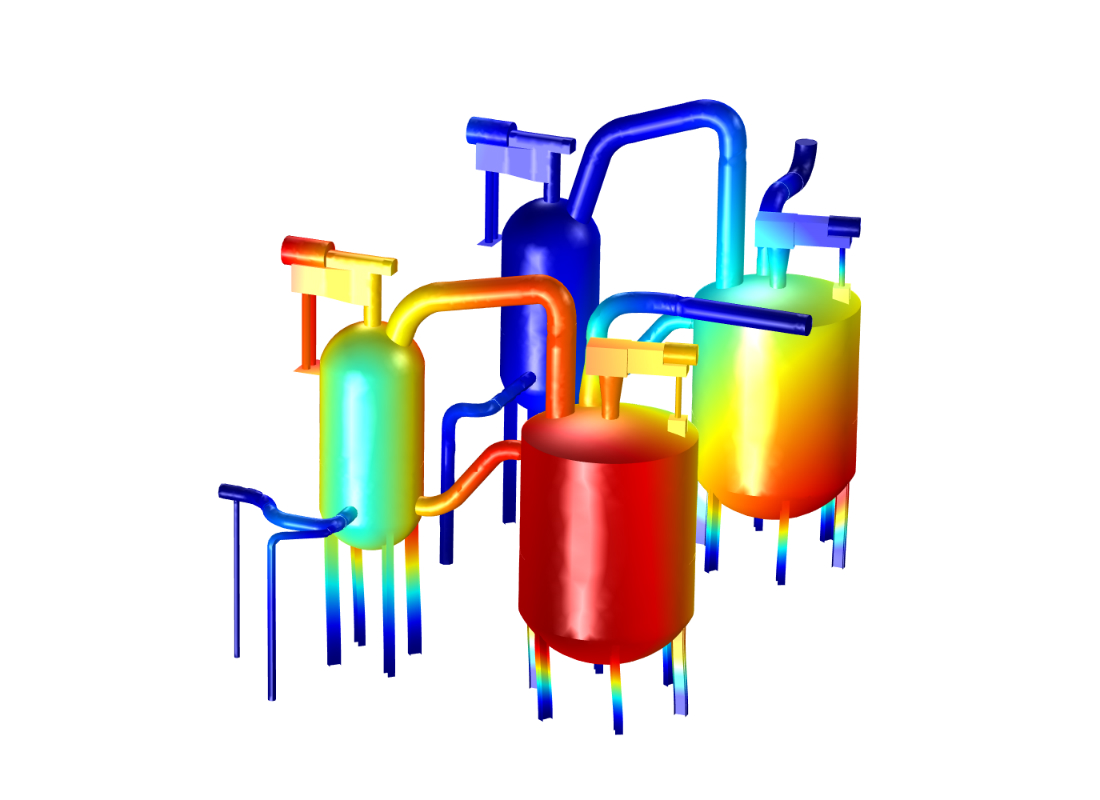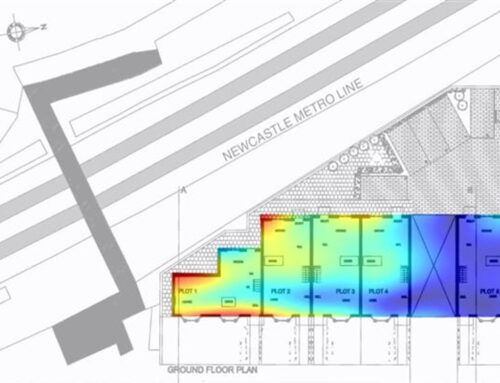Issue
An agitator building at Grangemouth Refinery was experiencing a high level of vibration leading to ruptures in the concrete foundations, cracking of the steel support structures and the risk of pipework failure. The building houses four agitator units used for mixing polymers supported on a mezzanine floor. During the operation of the agitators, high levels of vibration could be felt and observed throughout the building leading to the concern of frequency matching between the machines and resonances of the structure. Xi engineers were asked to determine; the resonance of the building, which agitators were responsible for the high levels of vibration, and to recommended possible solutions.
Solution
Xi engineers deployed geophones and accelerometers to determine that the high levels of vibration occurred at 7 Hz and were caused by frequency matching between two of the four agitators and a structural resonance of the building. A finite element (FE) computer model was built of the agitator building and calibrated using the measured data.
The FE models were used to calculate the cyclic stress and fatigue life for structural steel elements of the agitator building. Stress hotspots were identified in a number of steel beams close to the base of the agitators. The analysis was used to recommend where structural support should be improved.
Overview of Assessment Approach

Specialist Measurement Techniques

- Dynamic strain Measurement
- Experimental Modal Analysis
- Operating Deflection Shape Analysis (ODS)
- Measurement of Transient Vibration
Specialist Predictive Techniques
- Structural Finite Element Analysis (FEA)
- Acoustic Finite Element Analysis
- Computational Fluid Dynamics
Skill Set Used
- Low-frequency vibration sensors
- Multi-sensor signal processing
- Campbell diagram analysis
- Finite element eigenfrequency analysis
- Fatigue analysis
Other Benefits
- The modelling approach removes the need for ad hoc alterations to the building.
- Identify potential faults allowing mitigation before costly failures and downtime arise.
- A variety of design changes could be trialled in a virtual environment without the requirement of plant shut down for testing.
Further Comments
The installation of plant machinery onto steel frame buildings and mezzanine levels commonly causes vibration issues. The use of FE models that a calibrated with measured data can reduce the risk of plant and building infrastructure failure.
Relevant Publications
Energy Institute Guideline, 2008, Guidelines for the avoidance of vibration induced fatigue failure in process pipework, 2nd ed. Jan 2008 978–0–85293– 463–0
BS EN 1993-1-3:2006
Eurocode 3. Design of steel structures. General rules. Supplementary rules for cold-formed members and sheeting





